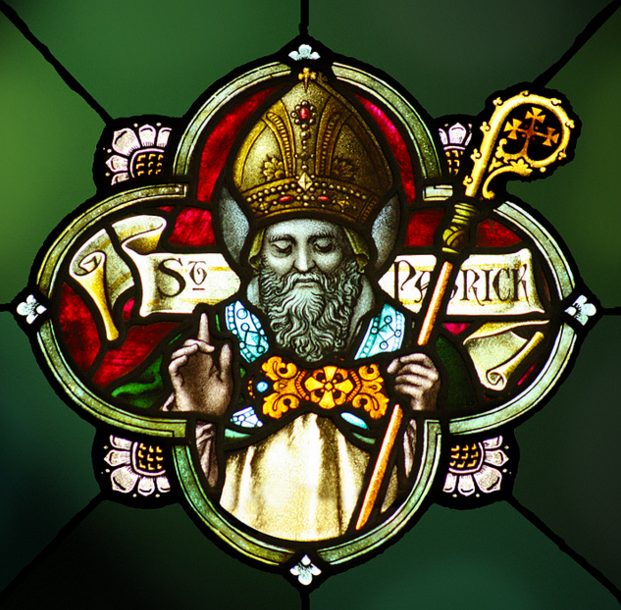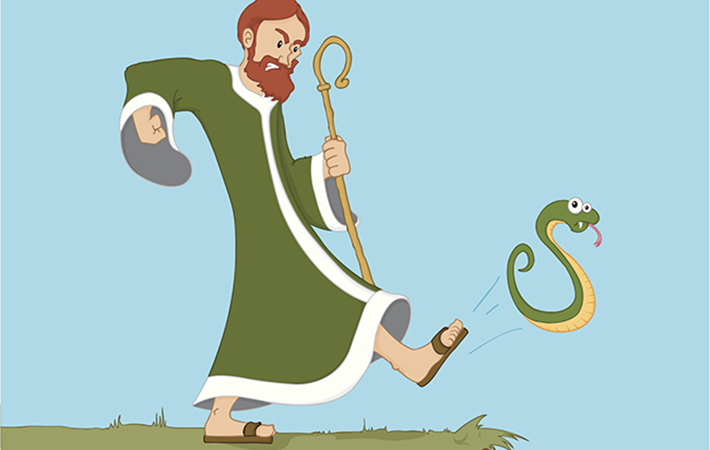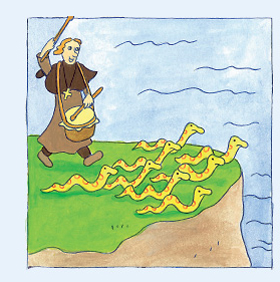Gallery
Photos from events, contest for the best costume, videos from master classes.
 |  |
 |  |
 | |
 |  |
 |  |
 |  |
An Image depicting St Patrick casting the snakes into the sea. Image source. Death and Legacy. Saint Patrick’s death is recorded in the Annals of the Kingdom of Ireland in the year 493 AD when he is said to have been 122 years old, although many historians believe he died in the year 461 AD. The date of his death was March 17, the day that is The Best Irish Songs And The Best Irish Films Of All Time For Paddy’s Day; 8 Ways That We Celebrate St. Patrick’s Day In Ireland; The Most Notable St. Patrick’s Day Traditions In Ireland; 17 Tasty St. Patrick’s Day Cocktails To Whip Up At Home; How To Say Happy St. Patrick’s Day In Irish; 5 St. Patrick’s Day Prayers And Blessings St. Patrick’s Day, celebrated on March 17 each year, is known for its parades, shamrocks, and a whole lot of green. It’s a day when people around the world embrace Irish culture — whether they have Irish heritage or not. But behind all the revelry, St. Patrick’s Day has a deep and fascinating history that goes far beyond the modern celebrations. Some of the traditions we associate with Did St. Patrick Banish the Snakes from Ireland? Myth, Metaphor, and the Truth Beneath the Legend; Myths and legends about St. Patrick’s Day c.2017; A Little Humor for Your Day; Some of the Witchcraft/Magickal Correspondences and Spell for Sunday and Monday; Divination Journal; March 16, 2025 Daily Horoscopes and Birthday Horoscope’s Traits For St. Patrick’s Day 2013, the New York Times reported on the phenomenon and talked to Kevin Cunningham, founder of the National Exotic Animal Sanctuary, which took in many abandoned snakes. Keywords: St. Patrick's Day parade Dundalk, funny corporate humor St. Patrick's, calling out snakes Ireland, humorous St. Patrick's Day celebration, Dundalk credit union events, St. Patrick's Day fun, Ireland work-life balance, festive parade highlights, quirky St. Patrick's Day traditions, corporate humor on holidays How St. Patrick’s Day Began After his death on March 17th, 461 AD , Patrick became Ireland’s patron saint , and his legacy lived on. Over time, people honoured him with feasts and celebrations , and what started as a religious holiday eventually became the global celebration of Irish culture we know today! Tuesday marks St. Patrick's Day, named after the 5th-century missionary who was famous for banishing all of the snakes from Ireland.With staff in hand, the Christian preacher cast the slithering The first St. Patrick's Day Parade actually took place in Boston, Massachusetts, back in 1737; the city is known for its high percentage of residents who claim an Irish ancestry. However, some modern Pagans refuse to observe a day which honors the elimination of an old religion in favor of a new one. However, as captivating as this story may be, it’s essential to delve deeper into history and science to unravel the myth surrounding St. Patrick and snakes. The legend goes that during a 40-day fast on top of a hill, St. Patrick was attacked by snakes. In response, he chased all of them into the sea, freeing Ireland from these slithering It’s a story that has been passed down through generations, becoming an integral part of Irish identity and celebrated annually on St. Patrick’s Day. Frequently Asked Questions (FAQs) About St. Patrick and the Snakes 1. Was St. Patrick Irish? Actually, no. St. Patrick was born in Roman Britain, likely in Scotland. St. Patrick's Day, which is celebrated worldwide on March 17, honors St. Patrick, the Christian missionary who supposedly rid Ireland of snakes during the fifth century A.D.. According to legend The legend of St. Patrick ridding Ireland of snakes in the 5th century is a fascinating tale enticing both foreigners and residents. During an attempt to fast for 40 days, the saint was attacked by a group of snakes. St Patrick and the snakes. Where does the legend about St Patrick and the snakes come from, then? Snakes are generally associated with the devil in Christianity due to the tale of Adam and Eve, so perhaps it was a way of driving home how Patrick was Ireland's savior as he brought Christianity to its shores. Others have theorized that snakes are Most scholars agree: the “snakes” Patrick drove out were not animals—but ancient beliefs. In pre-Christian Ireland, the serpent was a symbol of spiritual power—used by druids, pagans, and mystics of the old ways. The myth of Patrick banishing snakes likely represents his mission to displace paganism and convert Ireland to Christianity. This clever greeting card takes a humorous twist on the legendary tale of St. Patrick driving all the snakes out of Ireland. It features a funny, lighthearted illustration of a group of snakes being driven away on a bus—clearly not happy about being evicted from the Emerald Isle! INTERIOR: Happy St. Patrick's Day On March 17 every year, St Patrick’s Day commemorates the life of St Patrick, a fifth-century Romano-British bishop. Overwhelmingly, however, most of what is commonly associated with St Patrick Every March 17th, the world turns green in celebration of St. Patrick’s Day—a vibrant tribute to Ireland’s patron saint. Parades march through Dublin, shamrocks adorn lapels, and pints of Guinness flow freely. But as the confetti settles in 2025, a quieter curiosity emerges. Who was St. Patrick beyond the festivities? What hidden stories linger beneath St. Patrick’s Day has changed substantially over the years since its founding in the 1600s. Stemming from traditions heavily rooted in religion, St. Patrick’s Day originated on March 17th to celebrate St. Patrick, the Patron Saint of Ireland and Engineers, who was renowned for spreading Christianity throughout Ireland and whose legend has become deeply intertwined [] St. Patrick may have driven the snakes out of Ireland, but it looks like he missed a few. Lavender, a beautiful rescue corn snake, has recently slithered off to a loving new home, but her friend Apollo is still waiting for his chance to find one. Apollo was rescued as a baby and spent 11 years as a
Articles and news, personal stories, interviews with experts.
Photos from events, contest for the best costume, videos from master classes.
 |  |
 |  |
 | |
 |  |
 |  |
 |  |